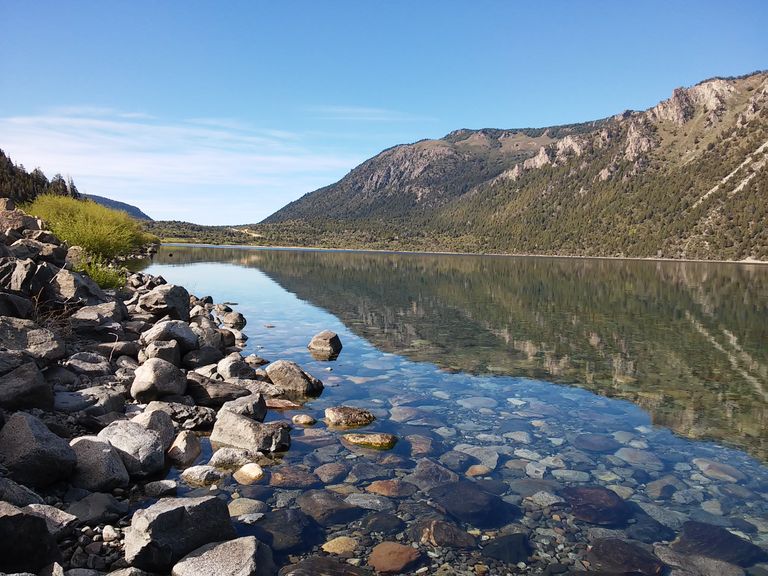
Lake Nahuel Huapí is known all over the world for three reasons: for being one of the largest bodies of water on the planet, for its spectacular beauty together with the other seven lakes of the route that bears this name, and for the legend that speaks of the supposed appearance of a monster similar to the Scottish Loch Ness and that, giving it a name similar to that of the lake, they have called it Nahuelito.
Let us leave the latter aspect aside for the superstitious, the former in terms of its dimensions being a statistical fact, and immerse ourselves, enraptured, in the contemplation of this spectacular mirror of water.
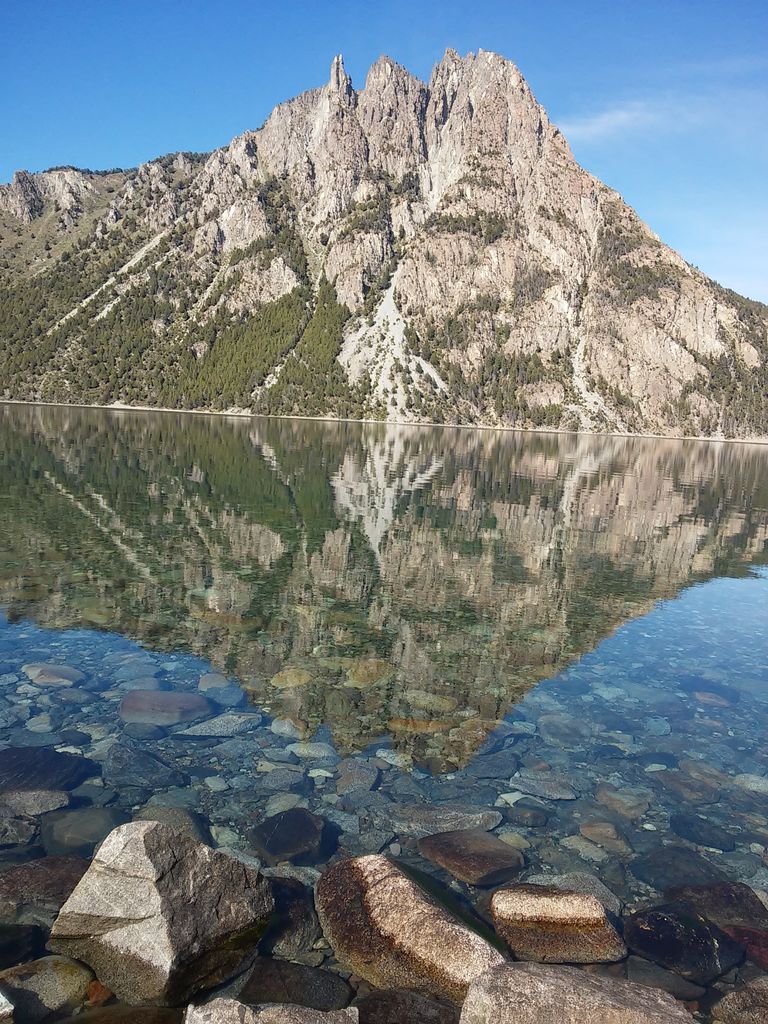
Mirror, indeed, because its crystalline waters, as you can see in the initial photo of this post, call for the traveller's admiration.
Bear in mind that the photo was taken on the shore, when the water is normally more choppy due to the effect of the ebb and flow of the waters.
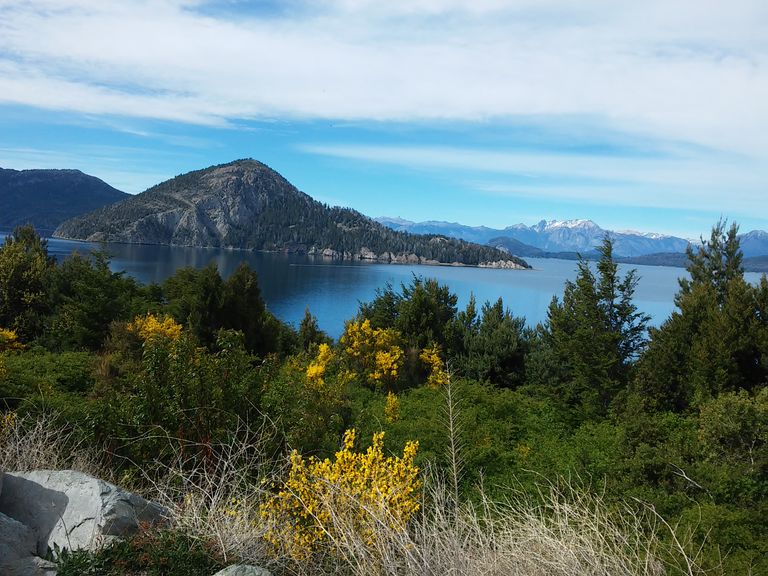
See how the image is reflected on the bottom of the water as if it were a mirror. It is truly incredible. To say spectacular, marvellous does not give an idea of what it feels like at that moment.
The part of the Nahuel Huapi section -which covers two Patagonian provinces such as Neuquén and Rio Negro- is the part that goes along the Seven Lakes Route after leaving the mythical Route 40 -travelled by many motorcyclists and people in search of adventure- and taking National Route 237 that will take us to this paradise.
After 60 kms of road in very good condition we arrive at Villa La Angostura and in its vicinity we start to notice the disappearance of the typical arid and inhospitable landscape of the Patagonian steppe, to a mountain range type ecosystem, with a profuse vegetation and the first appearances of the Nahuel Huapi.
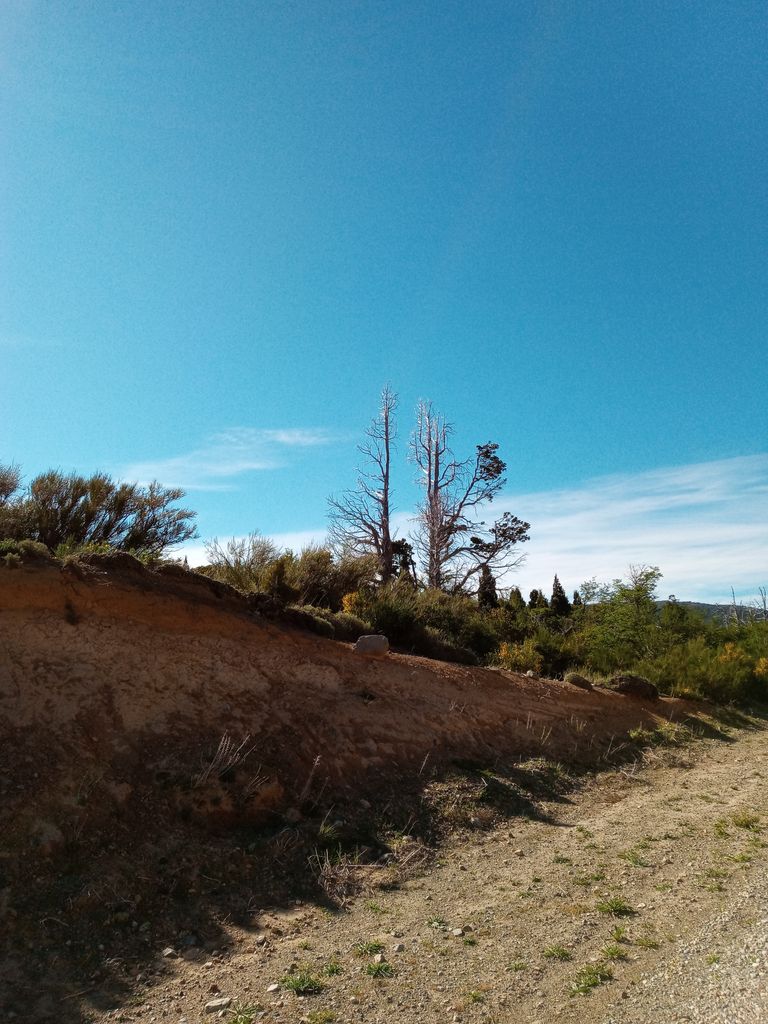
After overcoming each curve we observe in amazement the imposing lake, in a spectacular panoramic view.
But the real magic is yet to come.
After a bend we can stop at a viewpoint called Inalco and a few metres further down, a steep descent, with very smooth and slippery rocks, leads us to the shores of the lake.
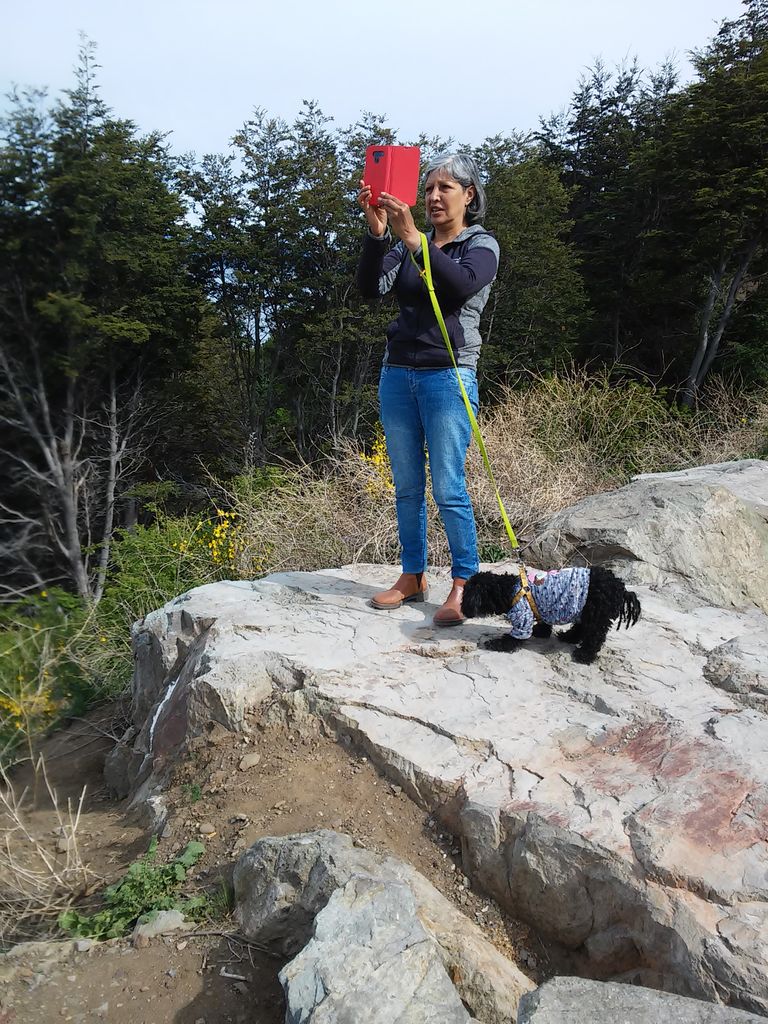
We are out of breath, almost breathless. Not because of the effort of the descent but because of the spectacle before our eyes, the only protagonists of a moment we will never forget in our lives.
That's the beauty of travelling outside the high season tourist season. There is absolutely nothing. We have the whole landscape to ourselves.
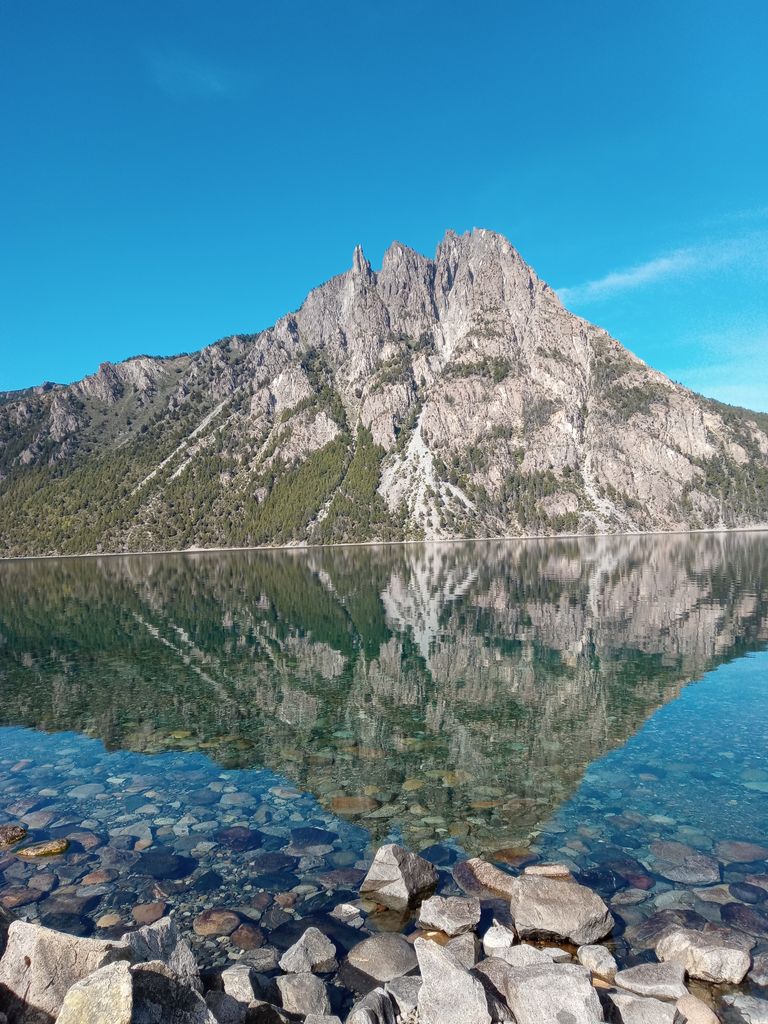
Of the 5,000 kms that we have to travel and whose itinerary we had proposed in this post dedicated to the section between [Buenos Aires and La Reforma](https://blurt.blog/blurtravel/@argenvista/a-tourist-corridor-of- 5-000-kilometres-crossing-the-pampas-to-patagonia-1st-part-buenos-aires-la-reforma-la-pampa-eng-esp) and in this other dedicated to the section between La Reforma and El Bolsón in full Andean Region, the three members of this expedition (the one who writes, my wife Sussana and our faithful companion Zezé -the toy poodle that you see in some images-) have reached the middle of the route but as a spectacle of nature I think we have arrived to the max.
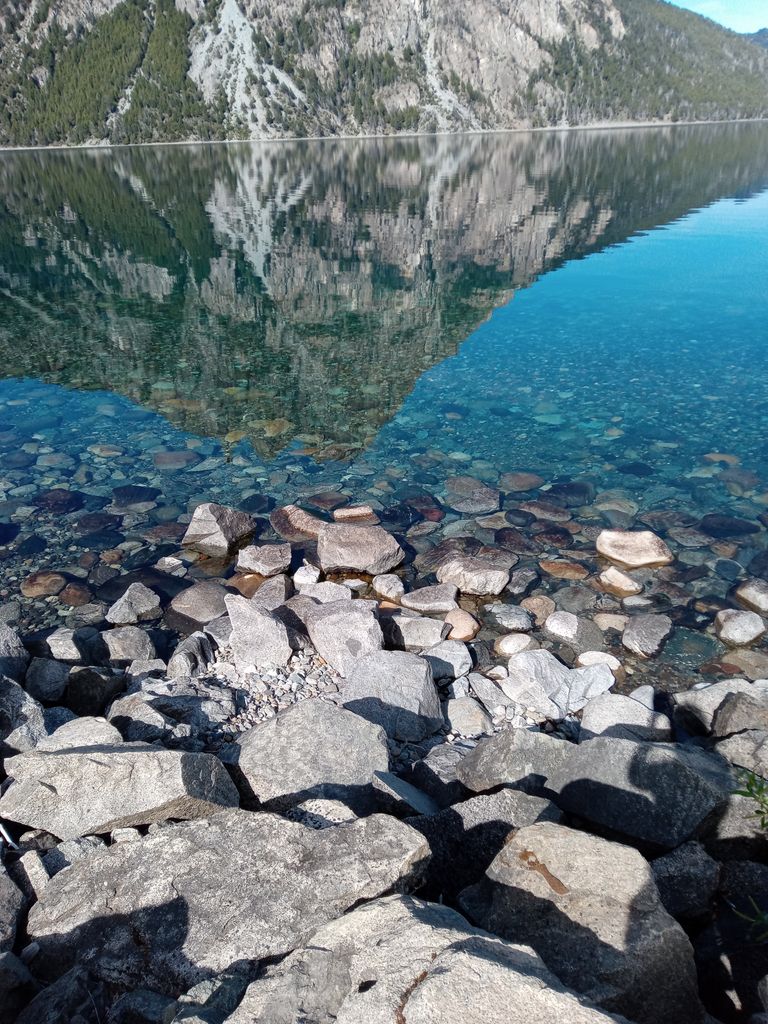
I don't know if the next lakes will be able to surpass it in beauty. Maybe. In a previous post we told you about the panoramic itinerary we did on the way out.
On the way back we plan to stop at each one. Passing by and observing them only from the road seemed incomplete to us. We don't know if we will ever visit them again. So let's enjoy this beauty that nature, prodigal as always, offers us.
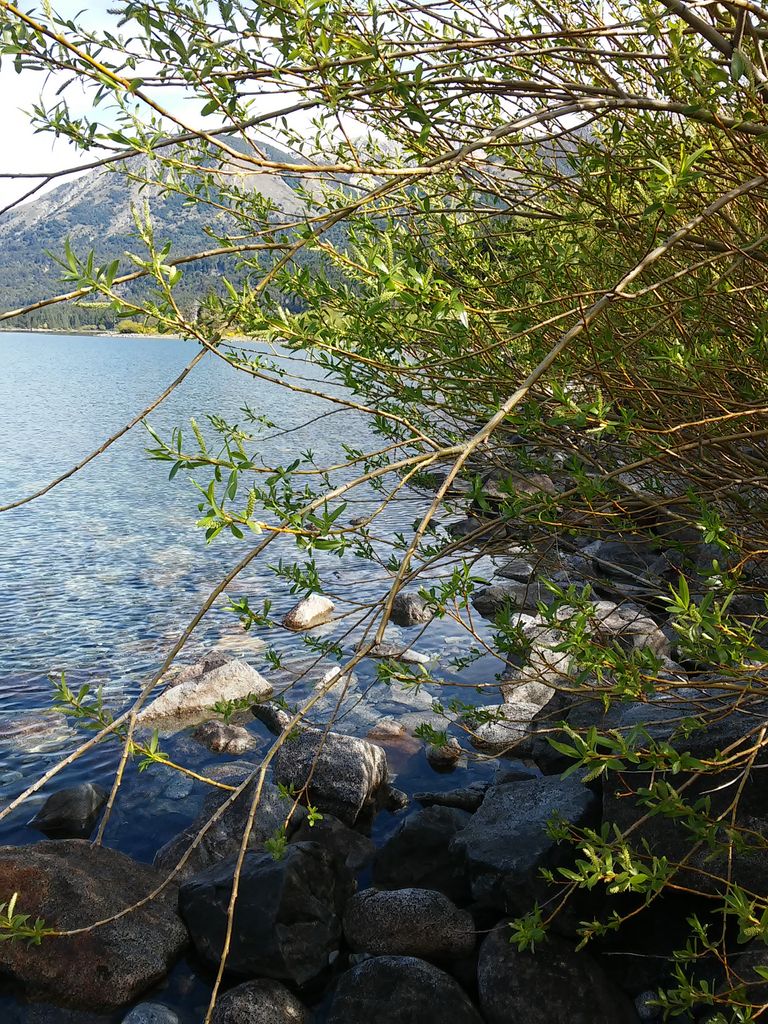
From now on, the real Camino de los 7 Lagos begins, stretching from Villa La Angostura to San Marti de los Andes, the most popular tourist attraction in the region.
Imagine if what we have seen so far is of incomparable beauty, what can be in store for us.
There are only 150 kms in total of which 100 kms correspond to the Route of the 7 Lakes and the rest to the Nahuel Huapi.
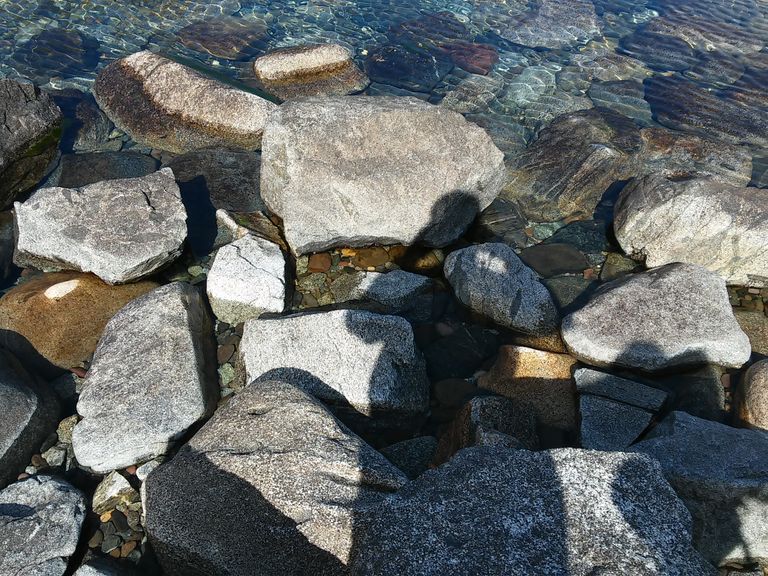
It is a route that can be done by car in barely an hour and a half without stopping. But it makes no sense, even though many tourists do it.
The incomparably impressive natural beauty is to stop, go down to the lakes and stop in ecstasy for as many minutes as we deem necessary to contemplate so much beauty.
Unfortunately there is no accommodation infrastructure in the middle of this route, which would be ideal. Therefore it is advisable to stop in Villa La Angostura and visit half of the lakes in one day on the way to San Martin de los Andes. Spend the night in this small mountain town and visit the remaining lakes on the way back. This way we can devote all the time they deserve.
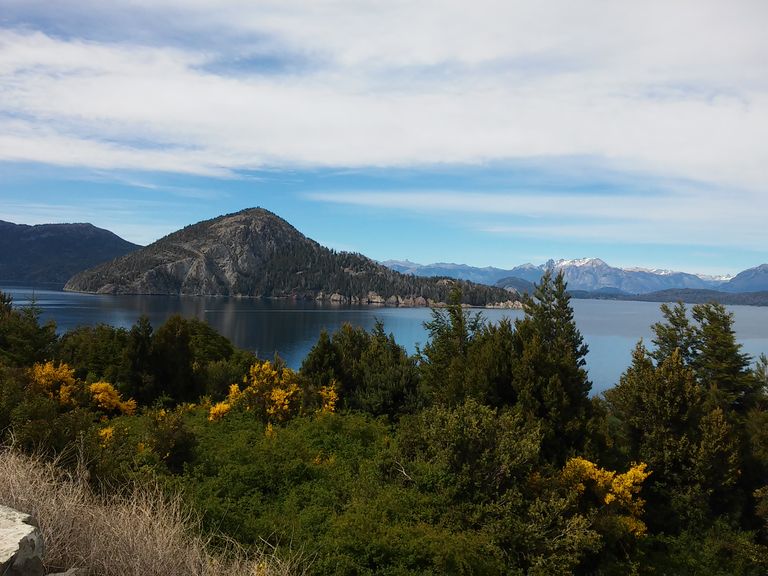
So we did it, documented it photographically and told you about it #blurtters friends.
Until our next meeting visiting the first of the seven lakes, which are actually two water mirrors in one, Lago Espejo and its tributary Lago Espejo Chico, one more beautiful than the other.

El Lago Nahuel Huapí es conocido en todo el mundo por tres características: por ser uno de los más grandes espejos de agua del planeta, por su espectacular belleza junto a los restante siete lagos de la ruta que lleva este nombre y por la leyenda que habla de la supuesta aparición de un monstruo similar al escocés de Loch Ness y que, dándole un nombre similar al del lago, lo han llamado Nahuelito.
Vamos a dejar de lado este último aspecto de lado para los supersticiosos, el primero en cuanto a sus dimensiones es una dato estadístico y vamos a sumergirnos, extasiados, en la contemplación de este espectacular espejo de agua.

Espejo, en efecto, porque sus cristalinas aguas como pueden ver en la foto inicial de este post llaman a la admiración del viajero.
Tengan en cuenta que la foto fue sacada en la orilla, cuando normalmente el agua está más movida por el efecto del flujo y reflujo de las aguas.
Vean como la imagen se refleja en el fondo del agua como si fuera un espejo. Es verdaderamente increíble. Decir espectacular, maravilloso no da una idea de lo que se siente en ese momento.

La parte del tramo del** Nahuel Huapi** -que abarca dos provincias patagónicas como lo son Neuquén y Rio Negro- es la parte que va costeando la Ruta de los Siete Lagos después de dejar abandonado la mítica Ruta 40 -transitada por muchos motociclistas y personas en busca de aventuras- y tomar la Ruta Nacional 237 que nos llevará hacia este paraíso.
Después de recorrer 60 kms de ruta en muy buen estado llegamos a Villa La Angostura y en sus proximidades ya comienza a notarse la desaparición del típico paisaje árido e inhóspito de la estepa patagónica, para pasar a un ecosistema de tipo cordillerano, con una profusa vegetación y con las primeras apariciones del Nahuel Huapi.

Después de superar cada curva observamos asombrados la imponencia del lago, en una vista panorámica espectacular.
Pero lo verdaderamente mágico debe venir.
Después de una curva podemos detenernos en un mirador llamado Inalco y pocos metros más abajo, una bajada rípida, con rocas muy lisas y resbaladizas, nos conduce a las mismas orillas del lago.

Nos quedamos sin aliento, casi sin respirar. No por el esfuerzo de la bajada sino por el espctáculo que se nos presentaba ante nuestros ojos, únicos protagonistas de un momento que no olvidaremos en nuestras vidas.
Es lo hermoso de viajar fuera de los períodos de turismo en temporada alta. No hay absolutamente. Tenemos todo el paisaje para nosotros.

De los 5.000 kms que tenemos que recorrer y cuyo itinerario les habíamos propuesto en este post dedicado al tramo entre Buenos Aires y La Reforma y en este otro dedicado al tramo entre La Reforma y El Bolsón en plena Comarca Andina, los tres integrantes de esta expedición (el que escribe, mi esposa Sussana y nuestra fiel compañera Zezé -la caniche toy que ven en algunas imágenes-) hemos llegado a la mitad del recorrido pero como espectáculo de la naturaleza creo que llegado al máximo.

No se si los siguientes lagos podrán superarlo en belleza. Puede ser. En un post anterior les contamos el itinerario panorámico que hicimos a la ida.
A la vuelta tenemos pensado detenernos en cada uno. Pasar de largo y observarlos solo desde la ruta nos pareció algo incompleto. No sabemos si algún dia volveremos a visitarlos. Por lo tanto gocemos de esta belleza que la naturaleza, pródiga como siempre, nos ofrece.
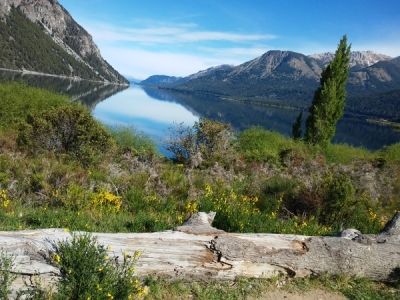
De ahora en más comienza el verdadero Camino de los 7 Lagos que se extiende desde Villa La Angostura hasta San Martí de los Andes que es el lugar más promocionado turística de toda esta región.
Imagínense si lo que vimos hasta ahora es de una belleza incomparable que puede ser lo que nos espera.
Son apenas 150 kms en total de los cuáles 100 kms corresponden a la Ruta de los 7 Lagos y el resto al Nahuel Huapi.
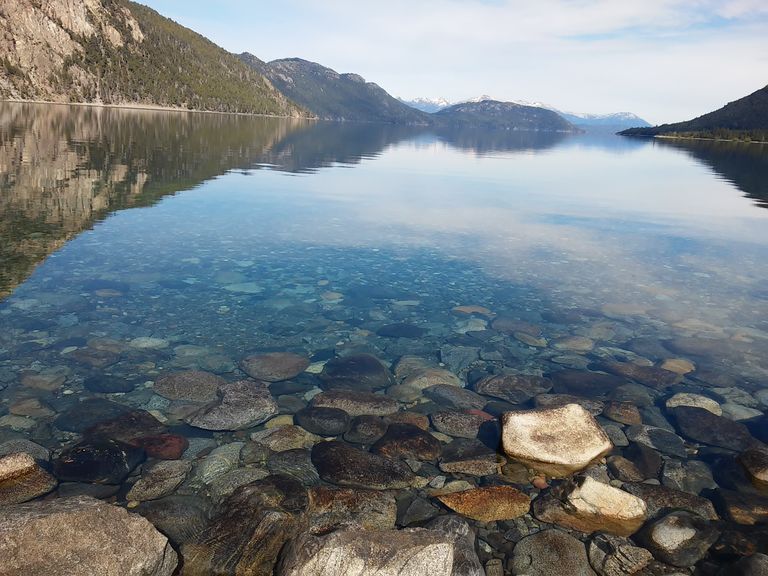
Es un recorrido que se puede hacer en auto en apenas una hora y media sin detenerse. Pero no tiene sentido a pesar de que muchos turistas lo hacen.
Lo incomparablemente imponente como belleza natural es detenerse, bajar a los lagos y deternos extasiados todos los minutos que lo consideremos necesarios para contemplar tanta belleza.
Desgraciadamente no hay una infraestructura de alojamientos en mitad de este recorrido, que sería lo ideal. Por lo tanto lo aconsejable es detenernos en Villa La Angostura y visitar la mitad de los lagos en un día en el camino de ida hacia San Martín de los Andes. Pasar la noche en esta pequeña ciudad de montaña y visitar los lagos restantes en el viaje de regreso.
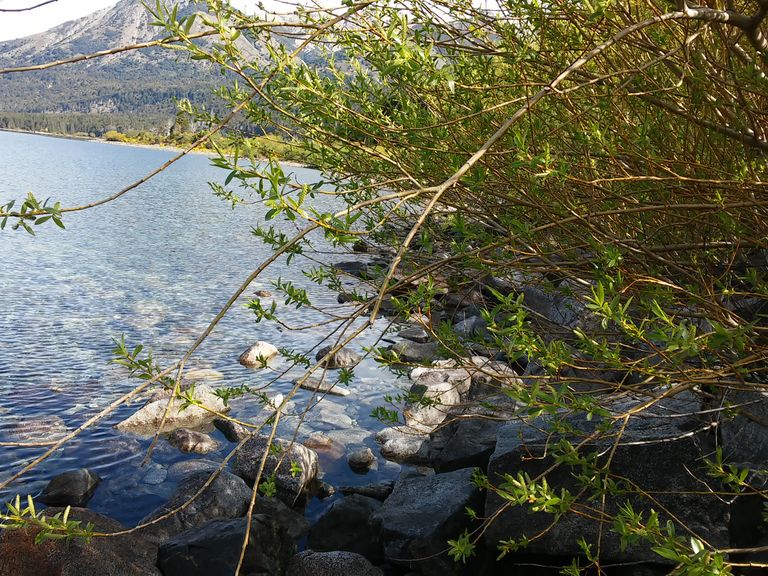
De esta manera podremos dedicarle todo el tiempo que se merecen.
Así lo hicimos, lo documentamos fotográficamente y se los contamos amigos #blurtters.
Hasta nuestro próximo encuentro visitando el primero de los siete lagos, que en realidad son dos espejos de agua en uno, el Lago Espejo y su afluente el Lago Espejo Chico, uno más hermoso que otro.
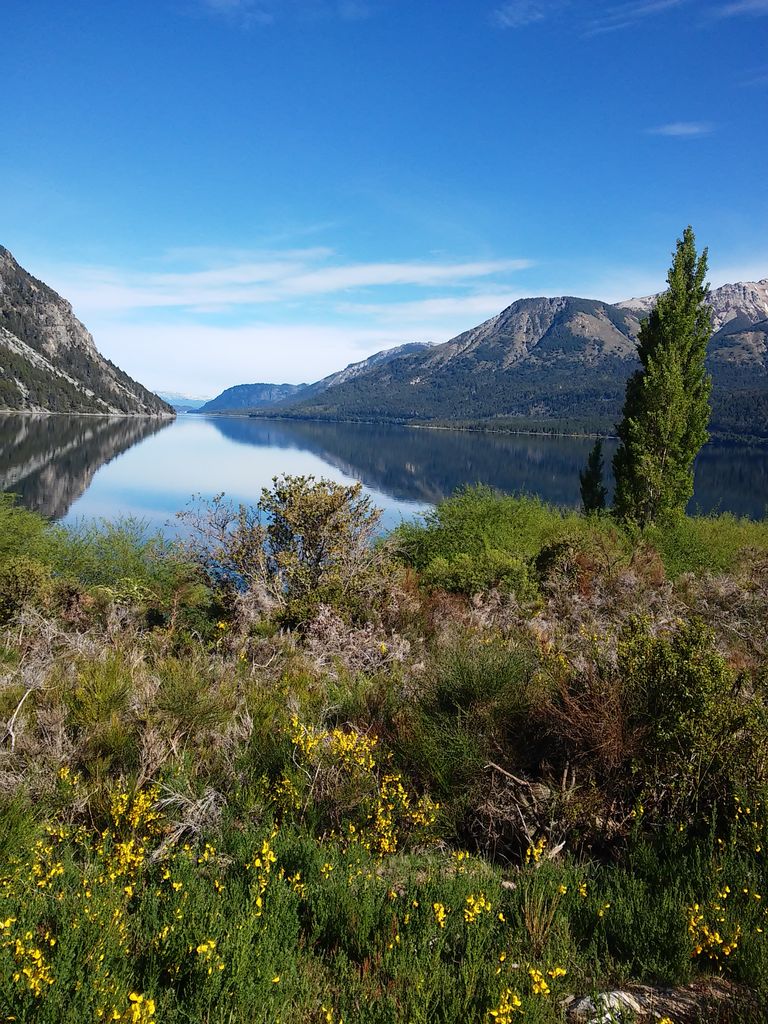

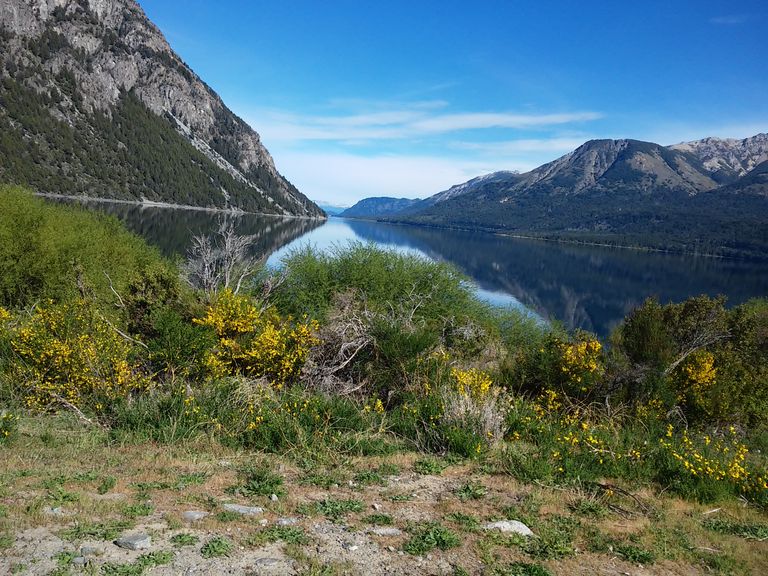
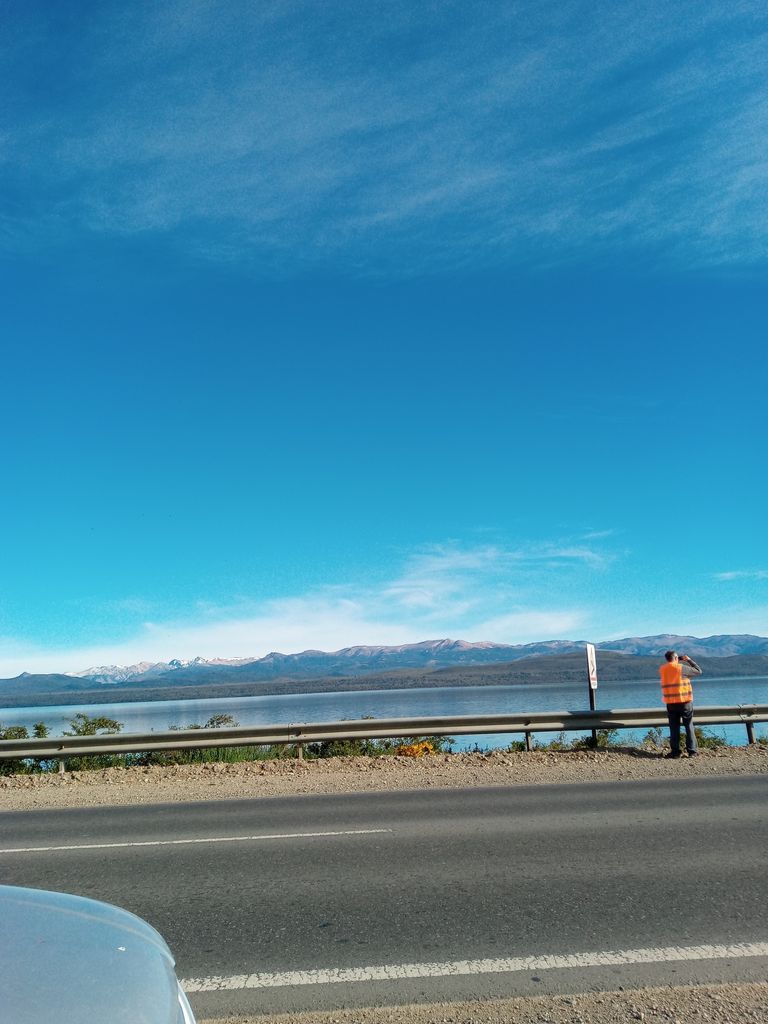

Thank you for curating and supporting my content @epistem.